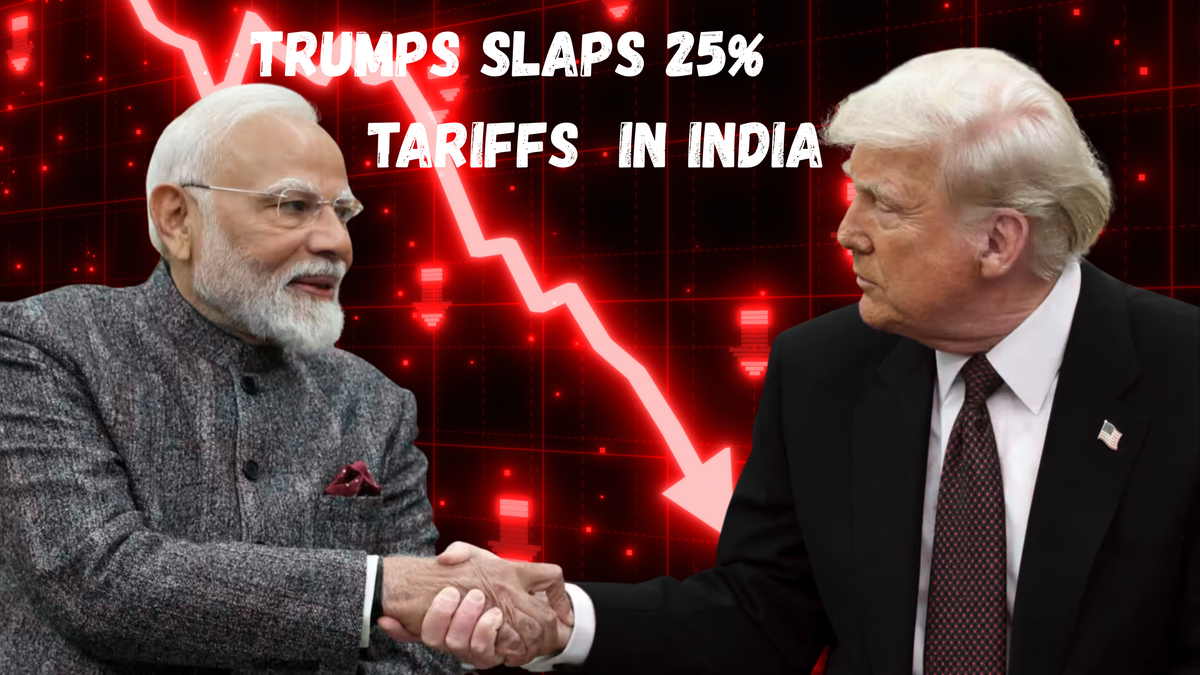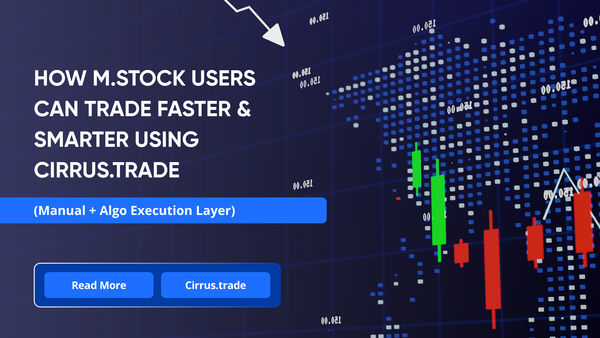TRUMP SLAPS 25% TARIFFIS ON INDIA

Blog by Cirrus.Trade

What is the reason behind this tariffs ?
In a bold move that has sent ripples through global markets, former U.S. President Donald Trump has imposed a 25% tariff on Indian imports. The decision is aimed at pressuring India to slash its tariffs on U.S. goods, reduce the trade imbalance, and reconsider its growing economic ties with Russia. More than just an economic measure, this tariff is a strategic bargaining tool—part of Trump’s tough-on-trade approach designed to secure a new trade deal and reinforce his political strength ahead of future negotiations.
Lets understand how will it effect the Indian Stock markets in India.
| Sector | Why Impacted | Key Companies (India) | Outlook |
|---|---|---|---|
| Textiles & Apparel | India is a major exporter to the U.S. (garments, yarn). Tariffs may hurt export competitiveness. | Arvind, Vardhman Textiles, KPR Mill | Bearish |
| Pharmaceuticals | U.S. is India’s largest market for generics. Additional penalties or trade disputes may slow approvals or hurt pricing. | Sun Pharma, Dr. Reddy’s, Cipla, Lupin | Slightly Bearish |
| IT Services | While tariffs don’t apply directly, strained ties could spill over into stricter visa policies or tech negotiations. | Infosys, TCS, Wipro, HCL Tech | Neutral to Bearish |
| Automobiles & Components | Tariffs on auto components exported to the U.S. may rise. | Motherson Sumi, Bharat Forge | Bearish |
| Agriculture & Food Processing | Indian rice, spices, and seafood exports face risk if penalties expand. | KRBL, Avanti Feeds | Bearish |
This content is for informational purposes only and is not financial advice. Any "buy" or "sell" mentions are illustrative. Please do your own research or consult a financial advisor before investing.
How India can manage this tariffs of US !
| Strategy | Action | Objective |
|---|---|---|
| Diplomatic negotiations | Tariff offer concessions, avoid retaliation | Reduce U.S. tariffs, secure deal |
| Sector resilience | Utilize exemptions, support exporters | Mitigate economic shock |
| Trade diversification | Expand into non‑U.S. markets | Spread risk and increase flexibility |
| Industrial strengthening | Upgrade domestic manufacturing, MSME support | Enhance competitiveness and self-reliance |
| Careful diplomacy | Engage without confrontation | Protect long-term interests |
India’s immediate priority is navigating the deal vs. deadline dynamic. While the 25% tariff is harsh—more severe than tariffs imposed on countries like Vietnam (20%) or Indonesia (19%)—negotiations remain ongoing, with U.S. officials stating they still seek a fair resolution
Public sentiment is mixed: opposition parties have criticized the government, calling it a diplomatic lapse; others warn of medium‑term economic drag (projected 0.3–0.4% GDP growth impact) . However analysts believe the tariff could be short-lived if a trade opening is reached soon
India’s multi-pronged approach—flexible trade negotiation, domestic support, market diversification, and industrial strengthening—provides the best chance of mitigating the impact of U.S. tariff measures and securing a balanced long-term economic partnership.






